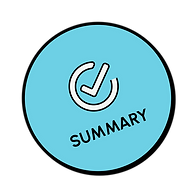The new age of note-taking: handwritten vs AI-generated summary.
- Raylene

- Nov 5
- 2 min read

For as long as one can remember, students have relied on pen and paper as their most trusted companions in the classroom. From taking down notes, learning by writing down and copying important information from the teacher’s board and more. The act of writing notes by hand has been more than just a way of recording information; it has been a way of learning.
However, in today’s digital landscape, note-taking is undergoing a transformation. With the rise of AI-powered tools that can instantly generate summaries, outlines, and even flashcards. This raises a question: what role does hand-writing still play, and how does it compare to the convenience of the AI- generated notes? The benefits of handwritten notes are well documented. Cognitive science has shown that the slower process of writing by hand forces students to process information more deeply. Instead of transcribing every word, they are compelled to summarise and choose what matters. This mental effort strengthens comprehension and long-term memory. For many, looking back at handwritten notes is like revisiting an outline of their own learning.
AI-generated summaries, however, present a new way of learning. With a single click, entire chapters can be reduced into short points. Lectures can be transcribed and analysed. Instead of struggling with how to phrase an idea, students are handed ready-made notes that capture the essentials. It is undeniable that it saves time, especially in fast-paced academic environments. For students who struggle with organisation or who learn best from seeing information neatly structured, AI summaries can provide a clarity that handwriting sometimes cannot.
Yet, this efficiency comes with a second side to it. When notes are generated automatically, the student is removed from the act of critical thinking . The mental engagement and decision-making that happens when choosing what to write down and how to phrase it is skipped. Still, the comparison between handwritten and AI-generated notes need not be an all-or-nothing choice. In many ways, the future of note-taking may be hybrid. A student might use AI to create a rough outline of a lecture, then annotate it by hand, adding reflections, questions, and examples. The AI summary provides structure, while handwriting injects personal meaning. Together, they form a richer, more flexible system.
The broader question, then, is not which method is “better,” but what the purpose truly is. If notes are meant purely as records, AI may excel. If they are meant as tools for learning, then active participation, whether through handwriting or thoughtful editing of AI-generated text, is also essential.
The age of handwritten notes is not ending, it is only evolving.
Just as laptops did not eliminate books but changed how they were used, AI will not erase handwriting but will reshape its role. Students may find themselves turning to AI for efficiency and clarity, but relying on their own pens and minds for the deeper work of making knowledge their own. And the challenge is not to choose between pen or AI, but to learn how to use both wisely.















Comments